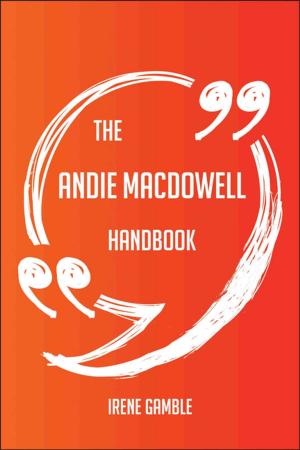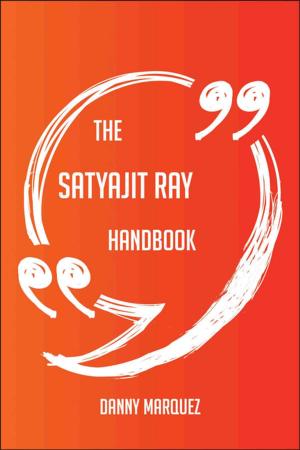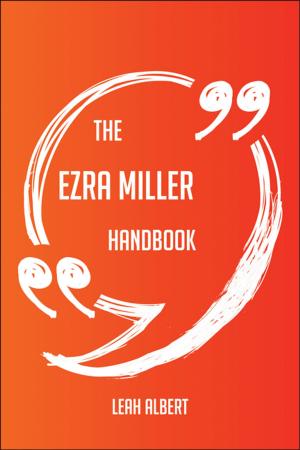Variation in the Muscles and Nerves of the Leg in Two Genera of Grouse (Tympanuchus and Pedioecetes) - The Original Classic Edition
Nonfiction, Reference & Language, Reference, Fiction & Literature| Author: | E. Bruce Holmes | ISBN: | 9781486493906 |
| Publisher: | Emereo Publishing | Publication: | March 11, 2013 |
| Imprint: | Emereo Publishing | Language: | English |
| Author: | E. Bruce Holmes |
| ISBN: | 9781486493906 |
| Publisher: | Emereo Publishing |
| Publication: | March 11, 2013 |
| Imprint: | Emereo Publishing |
| Language: | English |
Finally available, a high quality book of the original classic edition of Variation in the Muscles and Nerves of the Leg in Two Genera of Grouse (Tympanuchus and Pedioecetes). It was previously published by other bona fide publishers, and is now, after many years, back in print.
This is a new and freshly published edition of this culturally important work by E. Bruce Holmes, which is now, at last, again available to you.
Get the PDF and EPUB NOW as well. Included in your purchase you have Variation in the Muscles and Nerves of the Leg in Two Genera of Grouse (Tympanuchus and Pedioecetes) in EPUB AND PDF format to read on any tablet, eReader, desktop, laptop or smartphone simultaneous - Get it NOW.
Enjoy this classic work today. These selected paragraphs distill the contents and give you a quick look inside Variation in the Muscles and Nerves of the Leg in Two Genera of Grouse (Tympanuchus and Pedioecetes):
Look inside the book:
General Description and Relations.—Posterior to proximal part of shaft of femur and deep to M. extensor iliofibularis; posterior part deep to M. flexor cruris lateralis; bounded medially by Mm. flexor ischiofemoralis (dorsally), flexor cruris medialis (posteriorly), and adductor superficialis (anteroventrally); anterior end distal to anterior end of M. flexor ischiofemoralis; two distinct heads—pars iliofemoralis and pars caudifemoralis; pars iliofemoralis dorsal to pars caudifemoralis; posteroventral corner of former overlapped by latter; pars iliofemoralis wider and much shorter than pars caudifemoralis; extreme posterior end of pars iliofemoralis fused to overlying posteroproximal aponeurosis of M. extensor iliotibialis lateralis; small part of ventral edge sometimes fused with underlying tendinous posteroproximal corner of M. flexor cruris medialis; entirely fleshy except for small triangular tendinous area along dorsal margin at point where branch of middle tibial division of sciatic nerve passes deep to muscle; pars caudifemoralis long, thin,Pg 419 narrow, and strap-shaped; overlapping posteroventral corner of ischium; posterior end of fleshy belly narrowed and forming long slender tendon passing into caudal musculature; anterior end forming short narrow tendon fused to deep surface of ventral edge of pars iliofemoralis relatively near insertion; tendon continuous to insertion; fleshy anterodorsal corner of pars caudifemoralis slightly overlapped by ventral edge of pars iliofemoralis; some form of connection usually present between anterior part of M. caudofemoralis pars caudifemoralis and dorsal end of raphe between Mm. flexor cruris lateralis and femorocruralis, most often consisting of narrow weak tendon. ...General Description and Relations.—Divided into three distinct, widely separated parts—pars externa, pars interna, and pars media; pars externa: large; on posterolateral surface of shank; narrow proximally and distally; bounded anterolaterally by M. flexor perforans et perforatus digiti II and anteromedially by medial head of M. flexor perforatus digiti III; completely separate from pars interna and media except for common tendon of insertion; pars interna: large; on anteromedial surface of shank; narrow distally; bounded anterolaterally by M. peroneus longus and posteromedially by pars media (proximally) and medial head of M. flexor perforatus digiti III; broad sheet of tough connective tissue extending between distal parts of pars externa and pars interna; covering underlying M. flexor perforatus digiti III (medial head), somewhat fused with anteroproximal edge of M. peroneus longus; pars media: small and short; on medial surface of proximal part of shank; deep to tendon of insertion of M. flexor cruris medialis; bounded anteromedially by pars interna, posterolaterally by medial head of M. flexor perforatus digiti III, and proximally by M. femorocruralis; fused to latter, and boundary between the two difficult to locate.
Finally available, a high quality book of the original classic edition of Variation in the Muscles and Nerves of the Leg in Two Genera of Grouse (Tympanuchus and Pedioecetes). It was previously published by other bona fide publishers, and is now, after many years, back in print.
This is a new and freshly published edition of this culturally important work by E. Bruce Holmes, which is now, at last, again available to you.
Get the PDF and EPUB NOW as well. Included in your purchase you have Variation in the Muscles and Nerves of the Leg in Two Genera of Grouse (Tympanuchus and Pedioecetes) in EPUB AND PDF format to read on any tablet, eReader, desktop, laptop or smartphone simultaneous - Get it NOW.
Enjoy this classic work today. These selected paragraphs distill the contents and give you a quick look inside Variation in the Muscles and Nerves of the Leg in Two Genera of Grouse (Tympanuchus and Pedioecetes):
Look inside the book:
General Description and Relations.—Posterior to proximal part of shaft of femur and deep to M. extensor iliofibularis; posterior part deep to M. flexor cruris lateralis; bounded medially by Mm. flexor ischiofemoralis (dorsally), flexor cruris medialis (posteriorly), and adductor superficialis (anteroventrally); anterior end distal to anterior end of M. flexor ischiofemoralis; two distinct heads—pars iliofemoralis and pars caudifemoralis; pars iliofemoralis dorsal to pars caudifemoralis; posteroventral corner of former overlapped by latter; pars iliofemoralis wider and much shorter than pars caudifemoralis; extreme posterior end of pars iliofemoralis fused to overlying posteroproximal aponeurosis of M. extensor iliotibialis lateralis; small part of ventral edge sometimes fused with underlying tendinous posteroproximal corner of M. flexor cruris medialis; entirely fleshy except for small triangular tendinous area along dorsal margin at point where branch of middle tibial division of sciatic nerve passes deep to muscle; pars caudifemoralis long, thin,Pg 419 narrow, and strap-shaped; overlapping posteroventral corner of ischium; posterior end of fleshy belly narrowed and forming long slender tendon passing into caudal musculature; anterior end forming short narrow tendon fused to deep surface of ventral edge of pars iliofemoralis relatively near insertion; tendon continuous to insertion; fleshy anterodorsal corner of pars caudifemoralis slightly overlapped by ventral edge of pars iliofemoralis; some form of connection usually present between anterior part of M. caudofemoralis pars caudifemoralis and dorsal end of raphe between Mm. flexor cruris lateralis and femorocruralis, most often consisting of narrow weak tendon. ...General Description and Relations.—Divided into three distinct, widely separated parts—pars externa, pars interna, and pars media; pars externa: large; on posterolateral surface of shank; narrow proximally and distally; bounded anterolaterally by M. flexor perforans et perforatus digiti II and anteromedially by medial head of M. flexor perforatus digiti III; completely separate from pars interna and media except for common tendon of insertion; pars interna: large; on anteromedial surface of shank; narrow distally; bounded anterolaterally by M. peroneus longus and posteromedially by pars media (proximally) and medial head of M. flexor perforatus digiti III; broad sheet of tough connective tissue extending between distal parts of pars externa and pars interna; covering underlying M. flexor perforatus digiti III (medial head), somewhat fused with anteroproximal edge of M. peroneus longus; pars media: small and short; on medial surface of proximal part of shank; deep to tendon of insertion of M. flexor cruris medialis; bounded anteromedially by pars interna, posterolaterally by medial head of M. flexor perforatus digiti III, and proximally by M. femorocruralis; fused to latter, and boundary between the two difficult to locate.















